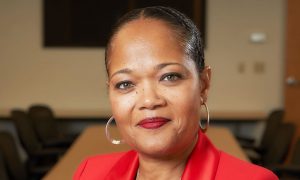Local recruiters discuss their efforts to bring new doctors to the area
By Deborah Jeanne Sergeant
The healthcare industry has struggled with a shortage of doctors, a situation worsened by the number of baby boomers retiring and the increasing healthcare needs of that population cohort.
The pandemic only exacerbated the issue with skyrocketing needs and providers quitting because of burnout.
Local hospitals strive to both attract and retain physicians to remain adequately staffed.
At Oswego Health, the in-house recruitment team works with national firms to create a larger pool of applicants.

“In addition, we work hard to ‘sell’ the community as much as the health system and we are very fortunate to have Billy Barlow on our team, who still is serving as part-time mayor of the city of Oswego,” said Kristen Denick, director of provider relations and recruitment at Oswego Health. “He often meets with our physician candidates and can personally share the renaissance of the area and provide insight on what’s to come.”
Some roles are harder to fill than others.
Denick said that specialties can be tough since most of their training programs are in large cities. This creates a familiarity that providers can be loathe to leave. Physician areas that Oswego Health has consistently found difficult to staff include anesthesia, psychiatry and primary care and family medicine. Denick said that these roles were hard to fill even before the pandemic.
Promoting the positive working environment is one way that Oneida Health tries to draw doctors.
Kevin Prosser, a media relations professional and part of the recruitment committee at Oneida, said that high patient satisfaction is one metric emphasized to potential candidates, along with quality of life.
“We often leverage that we’re 30 minutes from Syracuse, along with outstanding public and private schools,” Prosser added. “We’re a short drive to New York City, which appeals to many.”
Of course, remuneration and benefits also matter, especially when considering working at a more rural hospital. But Prosser said that benchmarking to remain competitive has helped Oneida.
“Every contract is unique to some degree; but many are the same benefits we offer all employees, including health, life, disability, vision and dental,” he said. “Continuing education credits is another benefit. Lifestyle and life-work balance is something we’re conscious of, especially of on-call positions, like obstetrics.”
Word-of-mouth is a primary means of attracting doctors to Oneida, as well as provider websites and recruiting agencies.
“Broad marketing for providers is not typically a good method related to return on investment unless it’s a provider-based publication,” Prosser said. “There’s a difference between pipeline to fill many positions and filling one particular position. If it’s one, it’s about trying to identify those individuals who you’d picture coming into that role, it may be a direct mail piece or networking.”
For filling numerous roles of the same type, such as staffing several orthopedic positions in an orthopedic practice, engaging with orthopedic colleges can help Oneida snag several new grads.
Online marketing tools can target the audience Oneida wants to reach. But good, old-fashioned networking can also help tap doctors who are not actively looking for work. One of the effects of burnout and pandemic-related organizational shifts is that previously content providers may be willing to consider working elsewhere with the ideal enticement that suits their needs. Those who are not currently looking for work may be motivated to consider working elsewhere with the right environment and opportunity. And these tend to be candidates that typically would not often change roles.
“You may get them at the right time when they’re willing to change,” Prosser said. “The opportunity to recruit providers is better than ever.”
Upstate Medical University, St. Joseph’s, Crouse and Auburn hospitals did not respond to requests for an interview.
Report: U.S. Could Use 125,100 Additional Doctors
The findings of the Association of American Medical Colleges’ 2021 report — “The Complexities of Physician Supply and Demand: Projections from 2019 to 2034” — projects a shortage of up to 48,000 primary care doctors and up to 77,100 specialists for a total of 125,100. The organization further stated that if every person had ideal access to providers, the number of additional doctors required to care for the population would swell to 184,000 doctors.




